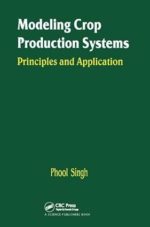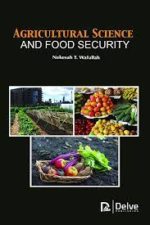The book covers the important aspects of water, air and noise pollution. Using a multidisciplinary approach, it highlights the impact of environmental pollution in the world. It also suggests methods for controlling and scientific monitoring of pollution-causing agents. Also included are chapters on efficient guidelines and standards, radioactive waste, solid waste disposal and sewage treatment, oil pollution and role of insecticides. Pollution in tanneries, fertilizer industry, and pulp and paper industries is also covered. The last few chapters are devoted to environmental management, benefit-cost analysis and mathematical modelling for environmental pollution control.
Environmental Engineering Paperback – 14 July 2017
KSh 7,500.00
The book covers the important aspects of water, air and noise pollution. Using a multidisciplinary approach, it highlights the impact of environmental pollution in the world. It also suggests methods for controlling and scientific monitoring of pollution-causing agents. Also included are chapters on efficient guidelines and standards, radioactive waste, solid waste disposal and sewage treatment, oil pollution and role of insecticides. Pollution in tanneries, fertilizer industry, and pulp and paper industries is also covered. The last few chapters are devoted to environmental management, benefit-cost analysis and mathematical modelling for environmental pollution control.
3 in stock
| SKU: | 9780074633281 |
|---|---|
| Categories: | Agriculture, Engineering |
| Author | G N Pandey |
|---|
Related products
-
Elements of Enviromental Engineering-Dr K.N. Duggal
KSh 2,586.00The key features include: the important principles and practices of Sanitary Engineering, as they are understood and generally applicable in our country today, have been fully delineated so that it may be easy for the students preparing for various examinations; the treatment of the subject has been kept exhaustive, sufficiently simple without sacrificing the fundamentals involved; and, effort has been made to keep the information as much up-to-date and compact as possible, and with that view, some references have been made to the relevant Indian Standard Specifications, so that to the engineers in the profession, it may also prove to be of use. The book is broadly split up into four parts. Part I deals exclusively with the subject of “Water Supply”, Part II describes “Sewerage and Sewage Treatment”, Part III “Water Supply and Drainage of Buildings” and Part IV “Environmental Sanitation”, which includes only some of the more important topics of the day viz., Refuse Sanitation, Ventilation and Air-conditioning, Air Pollution, and Malaria, incidental to Engineering. A number of selective questions of the various Indian Universities and other examinations have been given towards the end of each chapter to serve as an exercise to the problems duly solved in the chapter. The last 2-3 decades have seen tremendous research and development in the fields of water treatment and sewage/wastewater treatment. New concepts like unit operations in water treatment and unit operation and processes, in particular biological processes, in sewage/wastewater treatment have been introduced. Besides topics like defluoridation, demineralization and wastewater reclamation have evoked considerable interest and attention. To reflect these changes, this book has been revised to make it updated, with the latest information on these topics. The readers will find the book more appropriate and useful to their needs.
-
Mechanics of Engineering Materials-P.P BENHAM & R.J Crawford
KSh 3,000.00Mechanics of Engineering Materials” by P.P. Benham and R.J. Crawford is a widely used textbook that introduces students and professionals to the fundamental principles of material mechanics and structural behavior. The book covers essential topics such as stress and strain analysis, elasticity, plasticity, fracture, fatigue, and creep. It blends theory with practical applications, making it suitable for engineering students across mechanical, civil, and materials engineering. With clear explanations, worked examples, and practice problems, the text provides a strong foundation for understanding how materials behave under different loading conditions and how to design safe, efficient structures.
-
Tropical Roots and Tuber Crops: Cassava, Sweet Potato, Yams and Aroids (Crop Production Science in Horticulture)
KSh 8,260.00Root and tuber crops are important to agriculture, food security and income for 2.2 billion people in developing countries. These species produce large quantities of dietary energy and have stable yields under difficult environmental conditions. This second edition of Tropical Root and Tuber Crops is an authoritative treatment of four important root and tuber crops: cassava, sweet potato, yams, and aroids.
The same format is followed for each crop: Origin and History, Taxonomy and Botany, Breeding and Genetics, Developmental Physiology, Agronomy, Pests and Diseases, Post-Harvest Quality and Marketing. This new edition reviews the scientific literature produced during the last decade and presents major technical advancements. Modern molecular tools have been used to clarify the phylogeny, taxonomy and origin of these species. Similar advances have been made in physiology, agronomy, pathology and product chemistry. It is essential reading for students, researchers and horticulturists.
-
Mechanics of Engineering Materials (2nd Edition)
Mechanics of Engineering Materials is well-established as the definitive textbook on the mechanics and strength of materials for students of engineering principles throughout their degree course. Assuming little or no prior knowledge, the theory of the subject is developed from first principles and all topics of stress and strain analysis are covered right up to final year level. Mechanical properties such as tensile behaviour, fatigue, creep, fracture and impact are discussed and more advanced material is also included, particularly on finite element analysis, fracture mechanics and composite materials.
This second edition has been brought fully up-to-date in line with today’s courses. Incorporating new, two-colour illustrations throughout, the book reinforces student comprehension of the theory through numerous new worked examples and end-of-chapter problems involving real engineering situations. An important new feature of this edition is the use and illustration of computer spreadsheets throughout as a powerful problem-solving tool.
Mechanics of Engineering Materials is an indispensible course text for undergraduate students of mechanical engineering, engineering science and civil engineering. It will also be a valuable reference for those studying BTEC and GNVQ courses.
-
Modeling Crop Production Systems: Principles and Application 1st Edition by P Singh (Author)
KSh 5,800.00The use of simulation models is a necessity and also an aid in the decision-making process in sustainable agricultural systems. Organizing the experimental knowledge of crop production systems without the book keeping and deductive methods of mathematics is very difficult. This book aims to guide readers in the process by which the properties of the systems can be grasped in the framework of mathematical structure with minimal mathematical prerequisites. The objective of this book is to help the undergraduate, graduate and post-graduate students in the disciplines of agronomy, plant breeding, agricultural meteorology, crop physiology, agricultural economics, entomology, plant pathology, soil science and ecology (environmental science). This book may also be useful for administrators in various agricultural universities in order to direct research, extension and teaching activities. Planners at national and state levels may also benefit from this book
-
Agricultural Science and Food Security
KSh 23,800.00Agricultural Science and Food Security discusses the challenges and hurdles in global food security. The scope of the book includes, but not limited to agricultural science, sustainable agricultural food production, food production and efficiency in utilization of agricultural resources. The main reason is the poor management of pests, weeds ad diseases in crops that is obstructing the way of food security globally ad to address the same, management of same has been discussed in details to maximize production of food crops.
-
ENVIRONMENTAL ENGEENIRING
KSh 4,200.00The standard for Environmental Engineering FE Review includes;
- 110 practice problems, with full solutions
- Set up to provide in depth analysis of likely FE exam problems
- This guide will get anyone ready for the FE Exam
Topics covered
- Air Quality Engineering
- Environmental Science & Management
- Solid & Hazardous Waste Engineering
- Water & Wastewater Engineering
- Hydrologic and Hydrogeological Engineering
-
Agricultural Sustainability by Elisa Gomez Gonzalez (Author)
KSh 21,000.00Agricultural Sustainability starts with an overview of agricultural sustainability and the factors influencing the agricultural sustainability. As agricultural sustainability is all about understanding ecosystem services and can be seen as a study of relation between organisms and their respective environment, this text has been written to cover all these aspects. Further, sustainability in poultry and aquaculture has been described to broaden the research and potential of agricultural sustainability in arid and semi-arid areas has also been discussed










Be the first to review “Environmental Engineering Paperback – 14 July 2017”